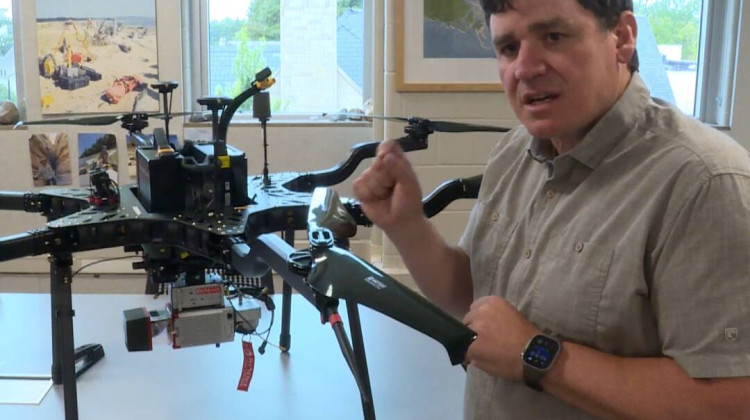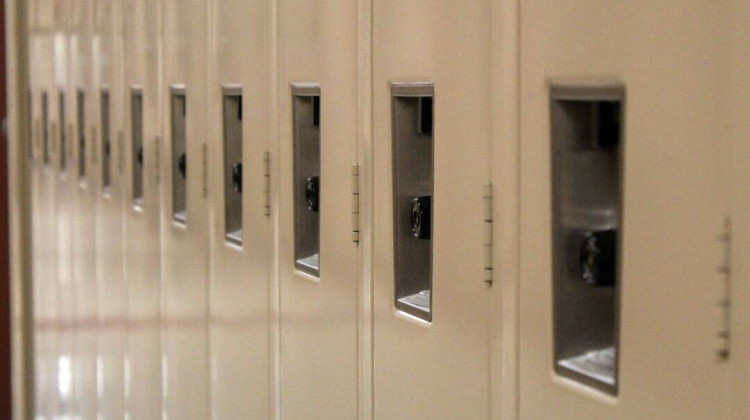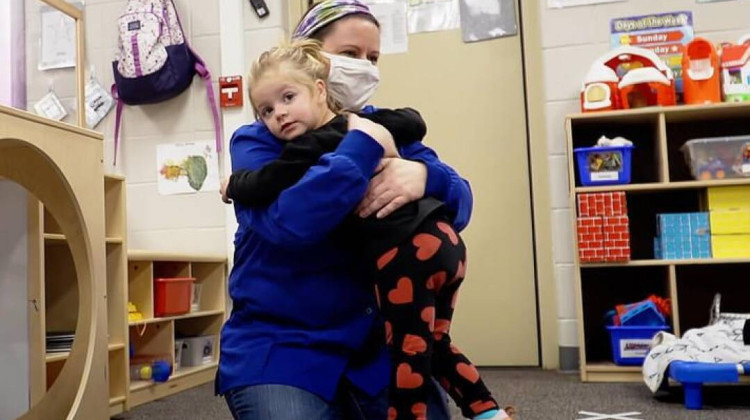
The team will use a technology called LIDAR to detect land changes, map vulnerable areas and predict where these hazards could occur next.
Rebecca Thiele / IPB NewsHurricane Helene led to mudslides, flooding and other events that caused more damage and loss of life than the hurricane alone. But what if we could predict where those disasters are likely to happen?
An Indiana University professor has joined a national team of researchers that aims to track what are called "cascading hazards." That's where one natural disaster increases the likelihood of another — or makes the effects of that next disaster worse.
Brian Yanites is an associate professor at IU and geomorphologist — someone who studies the shape of the surface of the Earth.
He said one common example of cascading hazards is how a landslide can push sediment into streams, leading to flooding. He said think of rivers like a bucket.
"It can hold so much water before it starts overfilling. If you fill half your bucket with sand, it can hold less water, and now that bucket can flood with much less rainfall," Yanites said.
Storms that uproot trees, sinkholes and flash flooding could also trigger cascading hazards in Indiana.
Yanites said hillier parts of southern Indiana like Brown County are particularly vulnerable to cascading hazards. So are areas with large bluffs along the Wabash and White rivers.
Yanites said the number of cascading hazards is increasing rapidly across the U.S.
"Partly because of climate change, but even more so because we're just building more and more," he said.
Looking for answers on climate solutions and climate change? Find more of our reporting through our project ipbs.org/climatequestions.
Yanites said more development is taking place on steeper slopes that are more prone to landslides and erosion.
The new Center for Land Surface Hazards (CLaSH) was set up with the help of a $15 million grant from the U.S. National Science Foundation.
The team will use a technology called LIDAR. Yanites said it acts a lot like radar, but the lasers it uses can penetrate tree cover — seeing all the way down to the Earth's surface.
LIDAR will help CLaSH to detect land changes, map vulnerable areas and predict where these hazards could occur next.
Yanites said the ultimate goal is to be able to communicate that info to emergency managers and prevent more damage. CLaSH is also partnering with community college professors and students in areas that are prone to cascading hazards.
"So they, as people in the community, can have just a bit more awareness and can talk to others throughout the community and spread sort of this knowledge that our discipline has been gaining over the last few decades," Yanites said.
Rebecca is our energy and environment reporter. Contact her at rthiele@iu.edu or on Signal at IPBenvironment.01. Follow her on Twitter at @beckythiele.
 DONATE
DONATE








 Support WFYI. We can't do it without you.
Support WFYI. We can't do it without you.